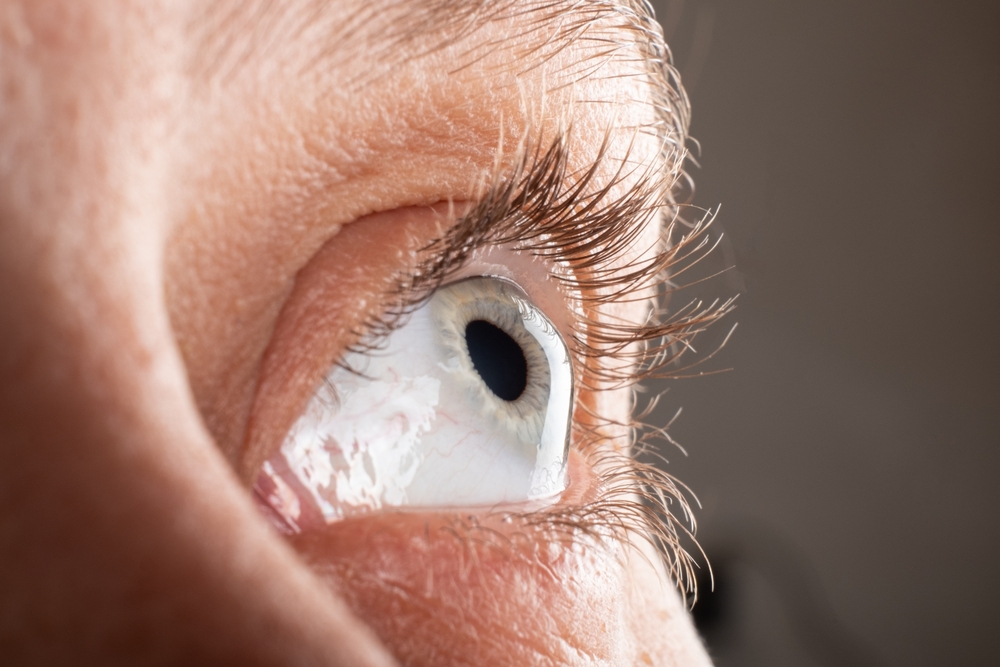
Corneal cross-linking is a relatively new and innovative treatment that has gained significant attention in the field of ophthalmology. This procedure aims to strengthen the cornea, the transparent front part of the eye, by using a combination of ultraviolet (UV) light and a photosensitizing eye drop. If you've been diagnosed with a condition that affects the cornea, such as keratoconus or corneal ectasia, corneal cross-linking may be a viable treatment option worth considering.
What is Corneal Cross-Linking?
iLink™ Corneal Cross-Linking is an FDA-approved treatment designed to strengthen the cornea, the clear, dome-shaped surface of the eye. It's particularly effective for patients with progressive keratoconus, a condition where the cornea becomes thin and weak, leading to distorted vision. The procedure involves applying riboflavin (vitamin B2) eye drops to the cornea, followed by controlled exposure to ultraviolet (UV) light. This combination creates new cross-links between the collagen fibers in the cornea, enhancing its structural integrity and preventing further bulging and thinning. iLink Corneal Cross-Linking can help stabilize the cornea, potentially preserving vision and reducing the need for more invasive treatments like corneal transplants.
Eye Conditions that Can Be Treated with Corneal Cross-Linking
Corneal cross-linking is primarily used to treat the following eye conditions:
Keratoconus: This is a progressive condition in which the cornea gradually thins and bulges into a cone-like shape, causing irregular astigmatism and vision problems.
Corneal Ectasia: This is a condition in which the cornea becomes irregularly shaped, often as a result of LASIK or other refractive eye surgery.
Pellucid Marginal Degeneration: This is a rare condition characterized by the thinning of the cornea along the lower outer edge, leading to irregular astigmatism and vision distortion.
Post-LASIK Ectasia: In some cases, LASIK or other refractive eye surgeries can cause the cornea to become unstable and irregularly shaped, a condition known as post-LASIK ectasia.
By strengthening the cornea through the cross-linking process, corneal cross-linking can help to halt the progression of these conditions and, in some cases, even improve visual acuity.
The Process of Corneal Cross-Linking
The process of iLink™ Corneal Cross-Linking involves several steps, typically performed in an outpatient setting. First, the eye is numbed with anesthetic eye drops to ensure patient comfort. In many cases, the thin outer layer of the cornea, called the epithelium, is gently removed to allow the riboflavin (vitamin B2) eye drops to penetrate the corneal tissue effectively.
Once the riboflavin has sufficiently saturated the cornea, the eye is exposed to a controlled amount of ultraviolet (UV) light. This UV light interacts with the riboflavin, causing a chemical reaction that forms new cross-links between collagen fibers in the cornea. The entire procedure usually takes about 60 to 90 minutes, including the preparation and application of UV light. Afterward, a protective contact lens is placed on the eye to aid healing, and patients are typically advised to rest and avoid eye strain for a few days as the cornea heals.
Recovery and Aftercare Following Corneal Cross-Linking
After the corneal cross-linking procedure, you can expect the following during your recovery:
Discomfort and Sensitivity: You may experience some discomfort, such as a burning or stinging sensation, as well as increased sensitivity to light and wind. This is normal and should subside within a few days.
Bandage Contact Lens: The bandage contact lens placed on your eye during the procedure will remain in place for several days, helping to protect the cornea as it heals.
Eye Drops: Your eye doctor will likely prescribe a regimen of eye drops, including antibiotic and anti-inflammatory drops, to be used during the recovery period.
Healing Time: The cornea typically takes 3-6 months to fully heal and stabilize after the cross-linking procedure. During this time, you may experience some fluctuations in your vision.
Follow-Up Appointments: You'll need to attend regular follow-up appointments with your eye doctor to monitor the progress of your cornea and ensure proper healing.
It's important to follow your eye doctor's instructions carefully during the recovery period to ensure the best possible outcome and minimize the risk of complications.
Is Corneal Cross-Linking Right for You?
Corneal cross-linking is a revolutionary treatment that has the potential to significantly improve the lives of individuals living with corneal conditions like keratoconus. By strengthening the cornea and halting the progression of these conditions, corneal cross-linking can help to preserve vision and reduce the need for more invasive treatments, such as corneal transplants.
If you've been diagnosed with a corneal condition and are considering your treatment options, schedule a consultation with Raleigh Eye Center to discuss corneal cross-linking. We can provide you with more information about the procedure, its potential benefits, and whether it may be a suitable option for your specific needs. Visit our office in Raleigh, Durham, Reidsville, Henderson, North Carolina, or South Hill, Virginia. Call (919) 899-2472, (919) 876-2427 or (252) 492-8021 to book an appointment today.













